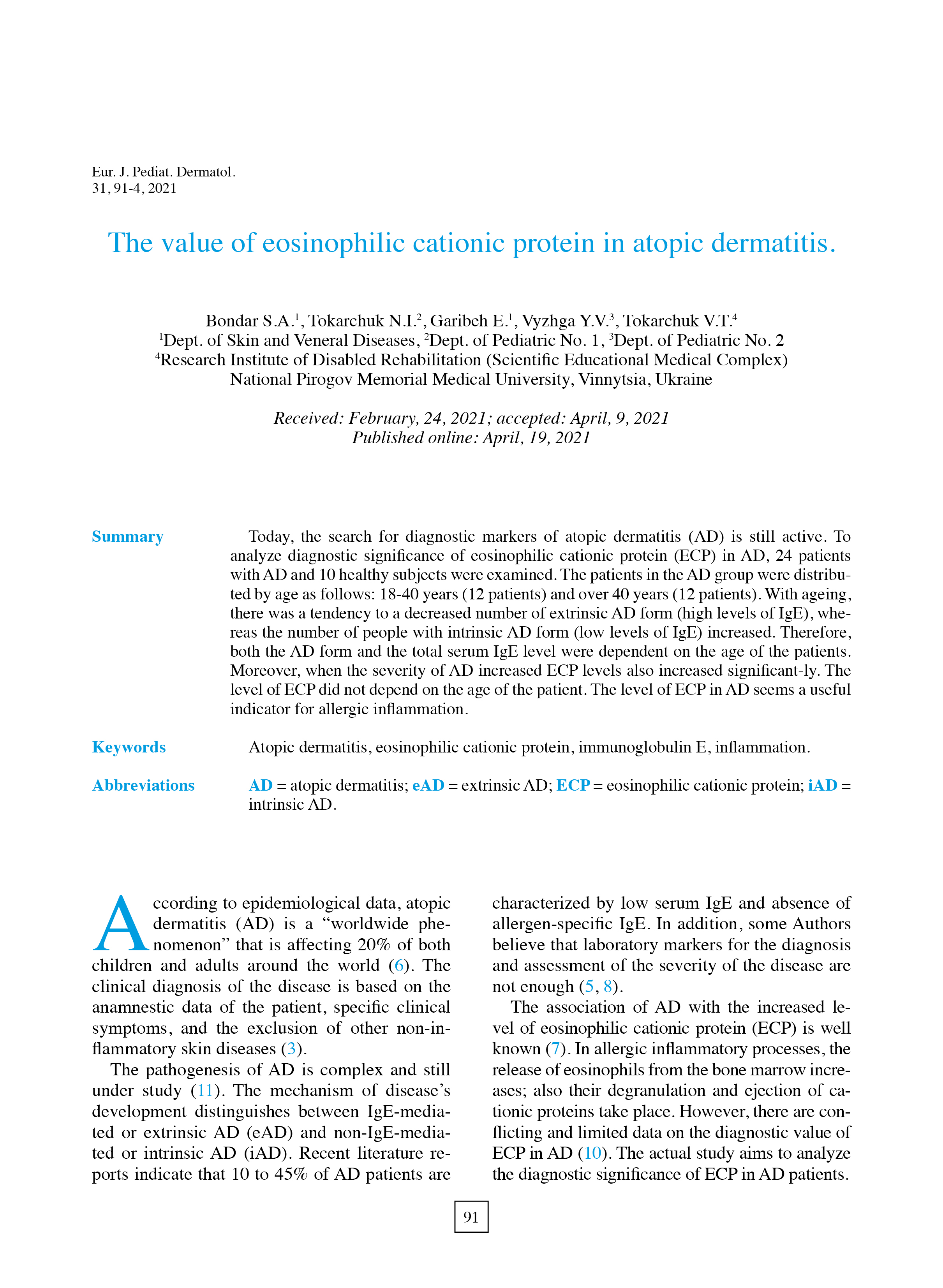The value of eosinophilic cationic protein in atopic dermatitis

Downloads
DOI:
https://doi.org/10.26326/2281-9649.31.2.2235How to Cite
Abstract
Today, the search for diagnostic markers of atopic dermatitis (AD) is still active. To analyze diagnostic significance of eosinophilic cationic protein (ECP) in AD, 24 patients with AD and 10 healthy subjects were examined. The patients in the AD group were distributed by age as follows: 18-40 years (12 patients) and over 40 years (12 patients). With ageing, there was a tendency to a decreased number of extrinsic AD form (high levels of IgE), whereas the number of people with intrinsic AD form (low levels of IgE) increased. Therefore, both the AD form and the total serum IgE level were dependent on the age of the patients. Moreover, when the severity of AD increased ECP levels also increased significant-ly. The level of ECP did not depend on the age of the patient. The level of ECP in AD seems a useful indicator for allergic inflammation.
